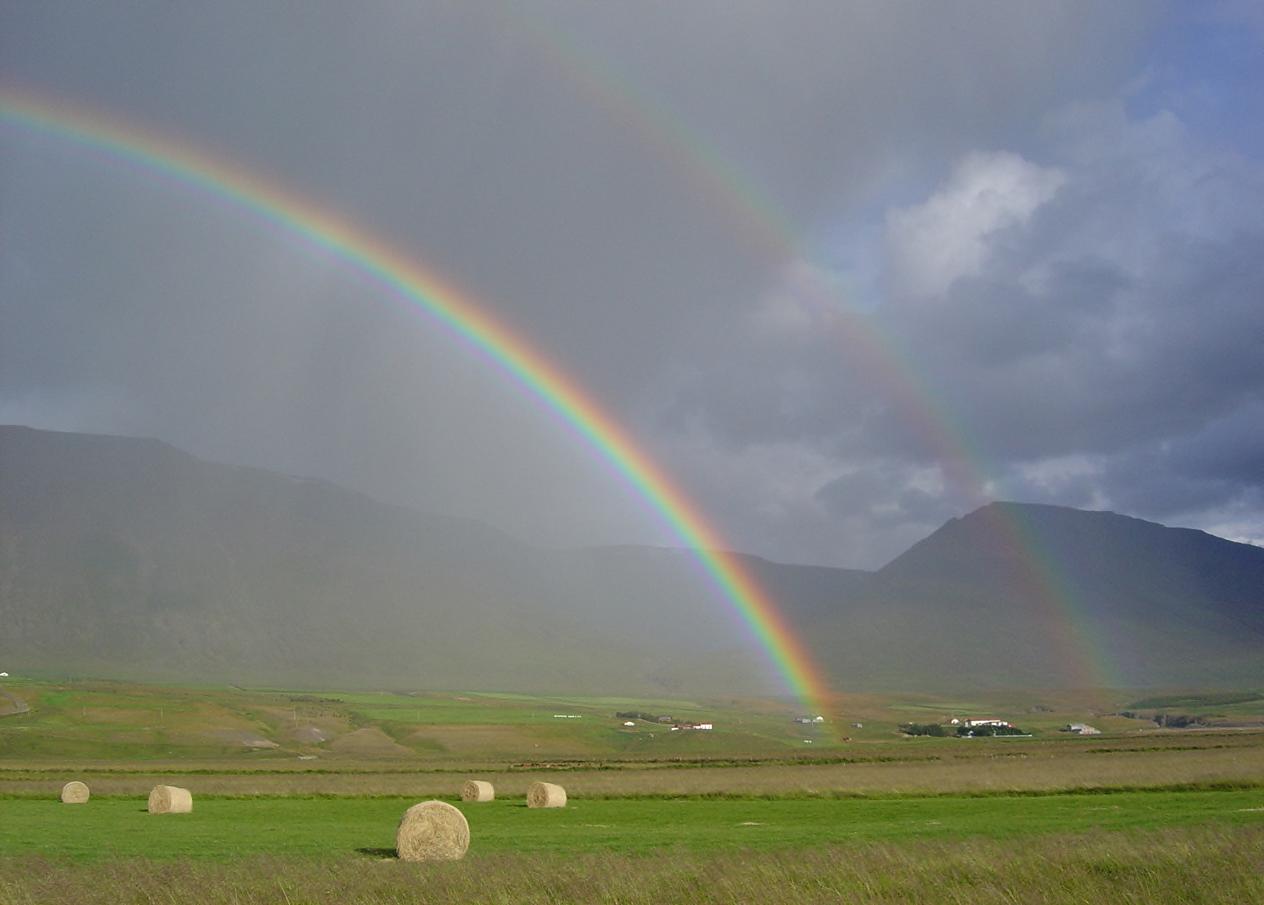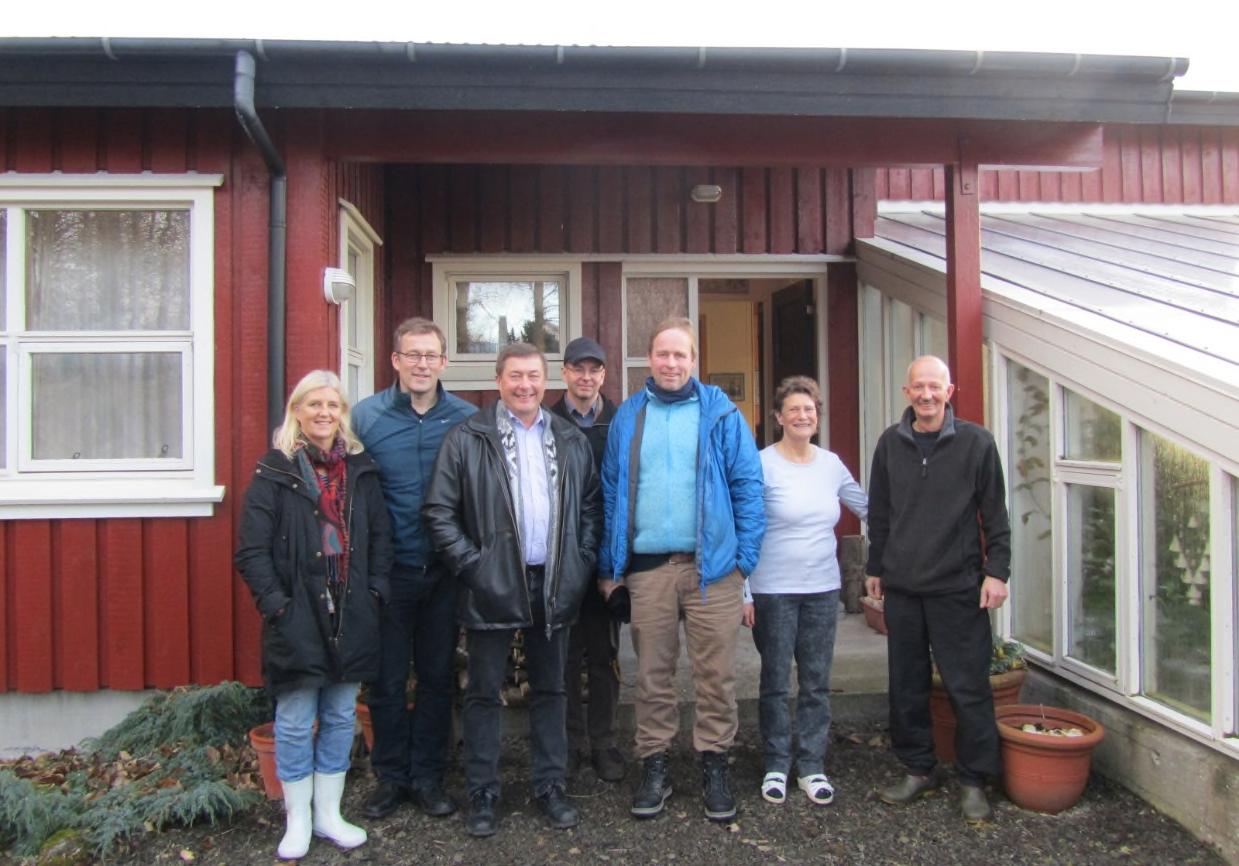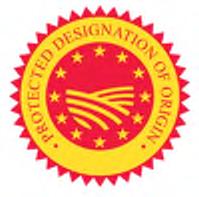BarrierstoOrganicAgricultureintheArctic

ÞóroddurSveinsson,TimoLötjönen,MariaWivstad, JóhannesSveinbjörnssonandChristianUhlig


ÞóroddurSveinsson,TimoLötjönen,MariaWivstad, JóhannesSveinbjörnssonandChristianUhlig
 Editor:ÞóroddurSveinsson
Editor:ÞóroddurSveinsson
ChristianUhlig
Researcher
NorwegianInstituteofBioeconomyResearch(NIBIO)
JóhannesSveinbjörnsson
DocentinAnimalScience
AgriculturalUniversityofIceland(AUI)
MariaWivstad
Director
EPOK–CentreforOrganicFoodandFarming
SwedishUniversityofAgriculturalSciences(SLU)
TimoLötjönen
SeniorResearcher
NaturalResourcesInstituteFinland(Luke)
ÞóroddurSveinsson
LectorinAgronomy(cropscience)
AgriculturalUniversityofIceland(AUI)
Administrator:AgriculturalUniversityofIceland(AUI)
Projectmanager:ÞóroddurSveinsson(AUI)
Projectsecretary:HelenaMartaStefánsdóttir(AUI)
Advisor:ÓlafurDýrmundsson,TheFarmersAssociationofIceland
Project‘smainfinancialsupporter:NordicCouncilofMinisters
Editor:ÞóroddurSveinsson
Layout:MargrétJónsdóttir
Englishco-ordinator:TerryG.Lacy
Publisher:AgriculturalUniversityofIceland
TheAgriculturalUniversityofIceland(AUI),withsupportfromtheNordicCouncilofMinisters, establishedaNordicworkinggroupin2014toidentifyanddescribebarriersthatrestrictthe developmentofagriculturalorganicproductioninthearcticregionsoftheNordiccountriesandto suggestsolutionsoralternativepathsthatcanpromotefutureagricultureinarcticregions.The workinggrouphadoneintensiveworkshopinIceland16-19November2014,butcontinued communicationbetweenprojectmemberswasmostly via e-mails.
Agricultureinthearcticzoneisunique.Itisaffectedbyclimate,naturallandscapeandremotenessto agreaterextentthanfarminginthemainagriculturalregionsintheNordiccountries.Mostofthe arcticfarmingislivestockbasedandextensive,whichasawholehaslittleimpactonthesurrounding environment.Themainproductsaremilk,meatandwoolfordomesticmarkets(touristsincluded) andexportsontheside.Horticultureexistsbutislimited,exceptinIceland.Nitrogenemissionsto waterandairfromtheuseofmineralNfertilizersandmanureisconsiderablylesscomparedtomore southernagriculturalareas,andtheuseofpesticidesislimited.Therefore,thecommonperceptionis thatorganicfarmingsystemsarewellsuitedtolandsundertheskiesofthe auroraborealis.
TheworkinggrouponavisittoNeðriHáls,anorganicdairyfarminIceland.Fromleft:MariaWivstad,Jóhannes Sveinbjörnsson,ÞóroddurSveinsson,TimoLötjönen,ChristianUhligandthefarmersDóraRufandKristján Oddsson(November2014).

Iceland All Norway Finnmark,Troms,Nordland Sweden Norrbotten Finland Lapland
EventhoughIcelandliessouthoftheArcticcircleitbelongstotheNordicarcticinthiscontextsince mostofIcelandisnorthofthe10°CelsiusisothermlineinJuly,andinfactthearcticregionsin Norway,SwedenandFinlandarealljustsouthofthis10°Cline.Icelandistheonlycountryinthe worldthathassubstantialagriculturalproductionnorthofthe10°ClineinJuly.
Agriculture isaproductionsystembasedonsolarenergyandsoilresources,whichcultivatescrops forfood,feedorindustrialpurposesandbreedslivestockformilk,meat,leisureorotheruseful products.Reindeerfarmingandwildplantharvestinginundisturbednaturalterrainsareoutsidethe scopeofthisreport.
Agriculturalarea(UAA) isanyareatakenupbyarablelandforcultivationofannualorperennial cropslikeroots,potatoes,seed,wholecropsandforageforgrazingand/orcuring.
Holding isanagriculturalproductionunit(afarm),usuallyafamilyunitintheNordiccountries
Conventionalfarming isthecommonagriculturalproductionsystemaccreditedbyrespectivestates and/orEUdirectivesregardinghumanandanimalwelfare,foodproductionsafety,anduseof fertilizers,pesticidesorGMO’s.
Organicfarming isanaccreditedagriculturalproductionsystembasedonprinciplesbyIFOAM OrganicsInternationalandEUregulations.However,thedirectivesorrulesforeachstatemayvary betweencountries.Themaindistinctionbetweenanorganicandaconventionalsystemisthe prohibitionofmineral/industrialfertilizers,syntheticpesticidesanduseofGMO’s.
Thelandareainthesefourcountriesisabout1.3millionkm2,with0.4millionkm2 inthearctic regionsor33%ofthetotallandarea(table1).InScandinavia,thearcticregionis22-29%ofthetotal landareabutonly2.6-8.0%ofthepopulationresidethere.Thismeansthatthepopulationdensityis muchlowerinthearcticor3residentscomparedto23residentsperkm2 southofthearctic.The totalpopulationintheNordicarcticisapproximately1.2million.
Table1.Areasandpopulationinrespectivecountriesarcticregions.
Area,km2 x1000
Populationx1000 Density/km2 Country total arctic % total arctic %arctictotalarctic
Iceland 103 103 100 330 330 100 3.2 Norway 386 113 29 5983 480 8.0 20.2 4.2 Sweden 450 100 22 9675 250 2.,6 26.9 2.5 Finland 340 100 29 5440 180 3.,3 21.9 1.8 Total/mean1279 416 33 21428 1240 5.8 23.03.0
Agriculturalland(UAA)aspercentoftotalareaislowinallcountriesorfrom3.3-9.2%southofthe arcticandonly0.4-1.2%inthearcticregions(figure1).Itshouldbenoted,however,thatnaturally vegetatednon-forestedterrains,thatareeasilyreachableforfarmswithgoats,sheep,horsesand cattlearecommonlyusedforgrazing,butarenotapartoftheUAAbydefinition.
Southofarctic
Arcticregion
Figure1.Agriculturalarea(UAA)aspercentoftotallandareainthearcticregionsandsouthofthearctic regionsintherespectivecountries.BasedonavailabledatafromEurostatandnationalbureausofstatistics, 2010-2013.
Arcticagricultureinallcountriesisprimarilybasedonfamilyfarmingwithforagecultivationforthe farmer’sownlivestocktoproducemilk,meat,woolandleisureactivities.Thegrazingseasonisshort, only3-4months,andpreservedforageisthedominantfeed,comprisingupto90%oftheannual forageration.Cerealproductionislimitedinthearcticandstarchyrichfeedmixturestoboost livestockproductionaremostlyimportedtotheseregions.Swedenisanexception,since approximately12%oftheUAAinthearcticregionisusedforgrainproduction,mostlyspringbarley forfeed.Onconventionalfarms,mineralfertilizersareusedsparinglywithanimalmanureoncrops togiveoptimumyields.Herbicidesandpesticidescanbeused,butothermeasurestofightweeds andpestsarepreferredbymostfarmers.
Theshareoforganicfarminginthearcticvariesbetweencountries(figure2).InarcticScandinavia 3.4to4.6%ofallfarms(holdings)areorganic,butthisfigureismuchlowerinIcelandwhereonly 1.1%ofholdingsareorganic,with65%horticulturalfarmers.Ontheotherhand,organichorticultural
farmershardlyexistinarcticScandinavia.OrganicfarminginIcelandandNorwayhasstagnatedin recentyears,unlikeinSwedenandparticularlyinFinlandwhereorganicfarminghasbeenontherise afterarecessioninthefirstdecadeofthiscentury.Thishasprobablybeenduetomorefavorable currentsubsidyprogramsthaninIcelandandNorway.
Figure2.Theshareofcertifiedorganicfarmsinthearcticregionsoftherespectivecountries.Basedon availabledatafromEurostatandnationalbureausofstatistics,2015.
Theshareoforganicretailsalesinthesecountriesrangesfromlessthan1%inIcelandandupto6% inSweden(Figure3).StatisticsontheshareoforganicretailsalesinScandinavianarcticregionsare notavailable.Theretailsalesvalueoforganicfoodisnotablymuchlowerthanwouldbeassumed fromtheshareoforganicfarmlandinallcountries.Thisisinpartbecauseoflowerproductivity(per acreageorholding)intheorganicsystemsthaninconventionalsystems,andalsothathighershares oftheproductionarecomprisedofanimalproductswhichhavehigherlandrequirements.
Figure3
.Farmlandandmarketshareoforganicretailsalesintherespectivecountries,2014.Source:IFOAMEU GroupexceptforIceland.*estimatemadebytheauthorsofthisreport.
Theaverageacreageperfarm(holding)variesalsobetweencountries,regionsandproduction systems(Figure4).InIceland,organicfarmsaremuchsmallerthanconventionalfarms.Thisispartly because65%oftheorganicholdingsarebasedonhorticulturalproduction.Iftheseholdingsare excluded,theaverageacreageoforganicfarmsisestimatedatapproximately30ha,whichisstill substantiallylowerthanfortraditionalfarmsinIceland.Acreageperfarmislowestinallsystemsand regionsinNorway,withorganicfarmsbeingthesmallest.TheorganicfarmsinSwedenandFinland aresubstantiallybiggerthanotherfarmsinthearctic.
Figure4
.Averageacreageperholdinginrespectivecountries.BasedonavailabledatafromEurostatand nationalbureausofstatistics,2015.
Thearcticinthefourcountriessharemanycommonclimaticfeaturesbutaredistinctinothers(Table 2).IcelandandcoastalNorwayhaveamaritimeNorthAtlanticclimatewithmildwinterscomparedto thecontinentalcoldwintersofarcticSwedenandFinland.ThemaritimeareasofIcelandandNorway havemuchhigherprecipitationduringwintermonths,fallingaseithersnoworrain,comparedto arcticSwedenandFinlandthathavemuchlessprecipitationandwhichmostlyfallsassnow(Figures 5).ThespecialclimaticfeatureofIcelandisthedistinctivelycoldergrowingseasonthanintheother threecountries.However,thereisahugetemperatureandprecipitationvariationwithineach countryaswell(Table2).Thisisduetomountainousterrainsinallcountrieswhichcreatewindward andleewardeffectsonthelocalclimate.Themainagriculturalareasandholdingsareatlowaltitudes closetosealevel,whereaslivestockgrazinginnaturalareasiscommonathigheraltitudeson mountainslopes.Thegrowthperiodvarieswithineachcountrydependingonlocation,butalso betweencountries.Thegrowthperiodislongestinthemaritimeregionsandshortestinthe continentalregions.Icelandhasingeneralmuchfewergrowingdegreedaysthantheothercountries inspiteoftherelativelylonggrowthperiod.Duetotheveryhighlatitude,allcountrieshave extremelylongdiurnalphotoperiodsduringthegrowingseason,whichfavorplantgrowthand counteractlowairtemperaturesinthearctic.
Table2.Approximatelowaltitudeprecipitation,temperaturesandgrowthperiodrangesinthe respectivearcticcountries.
Latitudearcticarea(°) 63-66 66-70 64-69 65-70
Altitude(m.a.s.) 0-2000 0-1900 0-2000 0-1200
Precipitation(mm) 400-1100 300-2000 600-800 450-700
Meanannualtemperature(°C) 2-4 1-3 0-2 -2-+3
MeantemperatureinJuly(°C) 9-11 13-10 14-15 13-16
MeantemperatureinJanuary(°C) -2-0 -4--7 -10--14 -9--14
Growthperiod(T>5°C)days 120-160120-180 120-150 105-140
Growingdegreedays(GDD,T>5°C) 500-700600-1100 600-1000 600-1000
T
Reykjavík Tromsø Luleå Rovaniemi
Reykjavík
Tromsø Luleå Rovaniemi
Figures5.Monthlymeantemperatureandprecipitationinthemostpopulatedarcticcitiesintherespective countries,30-yearaverage(1961-1990).
Theclimateinthearcticputsmorestrainonorganicfarmingcomparedtoconventionalfarming.Itis importantforcropstoinitiategrowthearlyinthespringtosecurefastgrowthandgoodyield becauseoftheshortgrowingseason.Mineralizationfromthesoilpoolandorganicfertilizers (manure/compost)occursinallseasonsbuttherateistemperaturecontrolled.Thisprocessinthe arcticisbothslow(duetolowtemperatures)andharmonizespoorlywiththecrops’needfor nutrientsduringthegrowingseason.Mineralizednutrientsfromthesoilpoolareintooshortsupply forfastcropgrowthinthespring.ThesameappliesforN-fixingcropslikeclovers;thefixationisslow inthespring.Mineralfertilizersappliedinthespringcansecurefastcropgrowthinconventional farmingsystems.Organicsystems,ontheotherhand,arenotallowedtousemineralfertilizersand thereisnoorganiccertifiedfertilizerasefficientasmineralfertilizerinthatrespect.Therefore,the yieldlevelsaresubstantiallylowerintheorganicsystemcomparedtotheconventionalsystem.It shouldalsobenotedthatorganicsystemsarevulnerabletohighnutrientlosses(leachatesand volatiles)fromorganicandgreenmanurebecauseofmisplacedmineralization.
Thearcticsoilsarepost-glacialformationsfromafterthelastIceAgeapproximately10000yearsago (Table3).LargeareasofSwedenandFinlandarecoveredbyacontinuouslayerofglacialtill dominatedbypodzols.InNorwaytheglacialtillisthinanddiscontinuous.NorthernSwedishsoils developedonparentmaterialsderivedfrommarineand,lakedepositsaswellasglaciofluvial deposits.Inthelow-lyingcoastalareasalongtheGulfofBothniasiltyandclayeydepositsare common.SmallerareasofsandyglaciofluvialdepositscanbefoundinallthreeScandinavian countries.
ParentmaterialsinIcelandicsoilsaremuchdifferentthaninScandinaviansoils,whichgivesthem uniqueproperties.Theyaredominatedbyrecentvolcanicmaterial,usuallyconsistingofbasaltic tephra(andosol).Activeeolianprocesses,frequenttephradepositions,andasub-arcticmaritime climatewithfrequentfreeze-thawcyclesduringlongwintersgreatlymodifythesoils.Thesesoils generallycontainarangeofporeandparticlesizesthatcanretainlargeamountsofwaterbutare alsoveryerodible.TheyarehighinorganicCandN,andhaveastrongtendencytofixphosphorus.
Naturalarcticsoilsareimportantcarbonsinksbecauseofrestrictedmineralizationcausedbylow temperaturesand/oranaerobicconditionsinwetlandareas.Thesesoilsarethereforecarbonrich andmoreorganicthanmostothersoilsatwarmerlatitudes.Peatcoversaround15%oftheareain FinlandandSwedenandasubstantialpartinNorthNorway.InIcelandupto50%oftheagricultural soilsaredrainedhistosolsormorecommonlyhisticandosols.Theseusuallyfertileorganicsoilsare thebackboneinmanyagriculturalregionsinthearctic.InsomesmallerareasinIcelandmineralrich geothermalsoilsarecultivatedforoutdoorvegetables.Marineandriverdepositsinfjordsandvalley bottomsarealsoimportantagriculturalsoilsinallcountries.Avastpartofarcticsoilsistoorockyor shallowforcultivationinmanyotherinhabitedlowaltitudeareas.
Table3.Thearcticsoilsintherespectivecountries.
Soilage,years <10,000 <10,000 <10,000 <10,000
Geologicalorigin volcanic,tephraand morainicdeposits marine,glaciofluvial andmorainic deposits
marine,lakeand glaciofluvial deposits
marine,glaciofluvial andmorainic deposits
Dominating texture sand,silt,clay, organic sand,organic sand,clay, organic sandandorganic
Soiltypes(FAO) andosols,histicand vitricandosols, histosols podzols,cambisols, histosols podzols, cambisols, histosols podzols,cambisols, histosols
pH(0-20cm) 4.5-6.5 5.5-6.0 5.5-6.0 5.5-6.0
Organicsystemsaremoresensitivetosoilfertility(quality)thanconventionalsystems.Organic farmingneedsnaturalnutrientrichandfertilesoils,likedrainedorganicwetlandsandfloodplainsin deltaareas,toobtainadequateandsuccessiveyields.Conventionalsystemshavemoreoptionswhen itcomestoimprovingandmaintainingsoilfertilityforgoodcropgrowthandlimitingnutrientlosses.
Thereisnoneedtodifferentiatebetweenorganicandconventionalfarmerswhenitcomesto selectionofcropsforlivestockorhumanconsumption.Relativelyfewcropscanbegrowninthe arcticduetoclimaticrestrictions.Commercialorganicgreenhouseandoutdoorhorticultureislimited becauseoftheshortgrowingseasons.InIcelandhowever,availableabundantgeothermalandhydro powermakesitpossibletosustainviablehorticulturalproductionallyearroundfordomestic markets.Thereisalsopotatofarminginthearcticforthedomesticmarket.Grainproductioninthe arcticisverylimitedbutnotableinSwedenandIceland.Thegrainisprimarilybarleyforfeedbutalso toalesserextentforhumanconsumption.Wheat,rye,peasandrapearesporadicallycultivatedin mostfavorableareasinthearcticforgrain,wholecrop,greenfodderoroilproduction.
Themaincropsinthearcticareperennialforagesforthedomesticlivestocklikecattle,sheepand horses.Themostimportantanddominatingforagespeciesistimothy(Phleumpratense),butitis usuallyseededinmixtureswithothergrassesand/orclovers.Thesespeciesaremeadowfescue (Festucapratensis),perennialryegrass(Loliumperenne),smoothmeadowgrass(Poapratensis),red clover(Trifoliumpratense)andwhiteclover(Trifoliumrepens).Theproportionofcloversinorganic foragefieldsistypicallyhigherthaninconventionalsystemsinarcticSwedenduetolower fertilizationratesfororganicfarming.
Perennialforagelegumes(clovers)areofinterestforbothorganicandconventionalfarmersinthe arctic.Thisisnotonlybecauseoftheirabilitytofixnitrogenfromtheatmosphere,butalsobecause oftheirnutritionalvalue.Foragelegumeshaveahighercontentofproteins,mineralsandmore rapidlydigestedfibersthangrasses,givingrisetohigherfeedintakeandproductionlevels.Inrecent decades,extensiveexperimentswithgrass-legumemixtureshavebeencarriedoutintheNordic countries.Oneoftheoutcomesoftheseexperimentsisthatthemainlimitationtotheuseofforage legumesinarcticareasistheavailabilityofadaptedcultivars.Breedingeffortsofbothwhiteandred
cloverhaveledtoconsiderableprogressinthisrespect,makingthecultivationofthesespeciesmore secure.Recentstudieshaveshownthatgrass-legumemixturesaremorestableandmoreproductive thantheirindividualcomponentsinmonoculture.
Cropyieldinorganicsystemsislowerthanincomparableconventionalsystems.Intworecently publishedmeta-analysesonorganicyieldgapsincomparisontoconventionalyields,organicyields wereonaverageeither19%or34%lower(Ponosioetal2014,Seufertetal2012,respectively).A recentstudyinIcelandshowedthatconvertingconventionalgrassfieldstoorganicgrassfields resultedinsubstantiallowernutrientuseefficiencyandnutrientyields(Sveinsson2017).The nutrientuseefficiencyanddrymatteryieldwas33%and25%higher,respectively,inthe conventionalsystemcomparedtotheorganicsystem.Farmsconvertingtoorganicfarming frequentlyexperiencesubstantiallylowerDMyieldsanddeteriorationintheirgrassfieldsbecauseof changesinvegetationandreducingfeedingvalues.InaSwedishstudysouthofthearctic, on nitrogenflowandfarm-gatebalanceswithdairyfarms,thenitrogenefficiencywassimilarinorganic andconventionalsystems(Wivstad2009).
Themaincauseforreducedorganicyieldsislowaccesstoorganicmanureorotherorganic fertilizers.Manure,whichisthemainorganicfertilizer,isalimitingresourceformostfarmsinarctic regions,whichresultsinlownutrientavailabilityfororganiccrops.Thesituationisdifferentbetween countries,however,sinceorganicfarmersinSwedenareallowedtouse(buy)manurefrom conventionalfarms,whichisprohibitedinothercountries.
Additionally,mostbovineorganicfarmsinthearcticimporthighproportionsofconcentrates,cereals andproteinfeed,thatresultsinsurplusesinthefarm-gatenutrientbalances.Consequently,the nutrientsupplytofeedcropsinorganicrotations,togetherwithinputthroughnitrogenfixation (clovers),cansupportbothhighyieldsandhighfeedqualities.However,thisisnotaneconomical optionfororganicsheepfarmersinthearctic.
Still,manyfarmsconvertingtoorganicfarmingwillexperiencesubstantiallylowerDMyields,and thereisaneedtomanageappropriatecroprotation,includingwithforagecropscontaining adequatecloverproportions.Furthermore,carefulmanuremanagementisofutmostimportanceto conservenutrientsinthefarmingsystemandtoreachhighnutrientuseefficiencyinthecrops.
Availabilityofadaptedcultivarsforarcticconditionsislimitedinallcropsforbothconventionaland arcticfarmers.Thisis,however,moreproblematicforarcticorganicfarmerssinceorganiccertified seedismuchhardertoobtainonthemarket.
Weedinfestationisgenerallymorepronouncedinorganicfarmingbecauseoflimitedoptionsand manpower.Weedcontrolinorganicsystemsismoredifficultthaninconventionalsystems,dueto theprohibitionofsyntheticherbicides.Well-plannedcroprotations,adjustedtillageandmechanical weedcontrolarethemainweedcontrolmeasuresinorganicproduction.Weedsare,however, usuallyasmallerbarrierfororganicfarminginthearcticthanfororganicfarminginthesouth.Most weedspecies,bothannualandperennialsweeds,areeasiertocontrolincroprotationswith perenniallaysthaninrotationswithannualcrops(cereals,pulsecrops,oilseedcrops).Hence,the existingcroprotationsinthearcticregionwithhighlayproportions,bothinorganicandconventional agriculture,counteractheavyweedproblems.
Eventhoughthenumberofweedspeciesislowerinthearcticcomparedtomoresouthernareas, weeddensityandweedbiomassinthecropfieldscanbehigh.Thereasonforthisisthatproblematic weedsprefermoist,coarsemineralandorganicsoilsandrelativelylowsoilpH,whicharetypicalin manyarcticfields.Weedspecieswhichthrivewellinarcticfieldsarespeciesofthegenus
Chenopodium, Spergula, Galeopsis, Cirsium,Stellaria, Rumex, Taraxacum, Ranunculus, Sonchus, Elymus,Poa and Alopecurus
Thearctichastheadvantageofcoldwintersandmanypestsanddiseasesthereforehavedifficulty surviving.Thisishowevernotalwaysthecaseincoastalareas,wherewintertemperaturesare relativelymild.Anumberoffungalforageandcerealdiseasesareknowninthearctic,likescald, powderymildew,blotchandrust,buttheycanbecontrolledefficientlywithcroprotation.Cropsof thegenus Brassica areoftenseverelydamagedinsomeareasbyfleabeetlesorpollenbeetlesinthe arctic.Thismaylimittheiruse,butinmostcasesthesepestscanbecontrolledbyproper managementandwithouttheuseofpesticides.
Themainorganicarcticlivestockareeithersheeporcattle.Therearenobarrierssofaronwhat livestockbreedsorganicfarmerscanusefortheirproductioncomparedtoconventionalfarmersfor eachcountry.TherearemanynativebreedsofsheepandcattlelistedinScandinaviaandmostof themareclosetoextinctionaspurebredsbecausetheyarenotusedinanysubstantialproduction.
Typesofproductivebreedsinthearcticcountriesvaryagreatdealhorizontally(betweencountries fromwesttoeast)butnotsomuchvertically,withincountries(fromnorthtosouth).Breedscanbe freelycrossedbetweencountriesinScandinaviabutnotinIcelandwhenitcomestogoats,sheep, dairycattleandhorses.BreedsinIcelandofthesespeciesarenativeandimportationofotherbreeds isnotpermitted.Breedsofbeefcattle(Galloway,AngusandLimousin)have,however,been sparinglyimportedtocrosswiththeIcelandicdairycattletoimprovemeatquality.TheIcelandic cattlehaspoorproductionefficiencyforbothconventionalandorganicsystemsalike.Hence, importationofnewgeneticmaterialwouldfavorbothsystems.TheIcelandicsheep,ontheother hand,iswelladaptedandproductiveforbothconventionalandorganicsystems.
Therearesmalldifferencesbetweenorganicandconventionalfarmerswhenitcomestobreeding methodsandbreedinggoalsfortheirlivestock.Thebreedinggoalsforbothsystemsaretoimprove animalproductivity(yield),fertility,longevityandhealth.InaSwedishstudyaboutpreferencesfor breedingtraits,bothconventionalandorganicdairyfarmersrankedthetraitlongevityfirst(Ahlman etal.2014).Butorganicdairyfarmersrankedmastitisandparasiteresistancehigherthan conventionalones.Oppositerankingsweretrueforhighmilkproduction.However,asthetraitsmost importantforproducerswithorganicherdsarealreadyconsideredinthecurrentNordicbreeding goal,mostagreethatitisnotnecessarytobreeddifferentlinesofruminantlivestockfororganic farmers.
Therewere160organiclivestockfarmersinthearcticin2014-2105,92sheepfarmersand66bovine farmers(Figure6).Atotalof70%oftheorganicfarmsareinNorway,buttheyarealsosmallerthan intheothercountries.
Norway Sweden
.Numberoforganiclivestockholdings(farms)inthearcticintherespectivecountries.Numbersonthe topofthecolumnsshowtheshare(%)oforganiclivestockofthetotalnumberoflivestockinthearctic.Based onavailabledatafromEurostatandnationalbureausofstatistics,2014or2015.
Figure6
Therewereatotal10,118headofcattleand3,408organicsheepinthearcticin2014-2015divided overtheseholdings(Figure7).Thefigurerevealsdifferencesinsizeoftheorganicfarmsinthearctic. Atotalof66%oftheorganicarcticlivestockisinNorway.
Figure7
.Averagenumberofheadoflivestockperorganicfarminthearcticintherespectivecountries.Based onavailabledatafromEurostatandnationalbureausofstatistics,2014or2015.
ThedominatingcompetitivedairycattlebreedsinScandinaviaareNorwegianRed(NRF)inNorway, SwedishRedandSwedishHolsteininSweden,andAyrshireinFinland.Thesebreedsareinterrelated andhavealsobeencrossedwithotherbreedslikeHolstein.Othernoteworthyintroducedbreedsin ScandinaviaareHolsteinandJersey,andsomefarmersusetheirowncrossesbetweenthesebreeds.
Thereisaslightbutnodistinctdifferencewhenitcomestoselectionofbreeds,milkquality(solidsor somaticcellcounts)oranimalhealthbetweenorganicandconventionaldairyfarmers.Thereis, however,alargevariationintheseparametersbetweenfarmerswithineachsystem.Themilkyield percowislowerintheorganicsystemcomparedtotheconventionalsystem(Figure8).Thisis believedtoberelatedtolowerutilizableenergyinorganicfeedwhichresultsinlowerproductivity. Toboostmilkyield,concentrates(digestiblestarch,proteinsandessentialminerals)makeupalarge part(upto40%onadrymatterbasis)ofthetotalfeedrationfordairycowsinbothsystems.Mostof theseconcentratesareimportedintothearcticregions.Theavailabilityoforganicconcentratesis limitedandalsocostlierfororganicfarmerscomparedtotheconcentratesavailableforconventional farmers.Thegrowingseasoninthearcticisshortandgrazedfeedisnotabigpartofthetotalannual feedrationfordairycows.Grazedfeedisamuchbiggerpartofthetotalannualrationforsuckle cowsandtheircalvesduringweaning.However,preservedfeedisthemainfeedforallcattleinthe arctic.
Figure8.Annualmilkyielddeliveredpercowinorganicandconventionalsystemsforeachentirecountry.
Source:CourseinUppsala:OrganicmilkproductionintheNordiccountries(2016),exceptforIceland.
Thesheeparemainlyraisedformeatandspecializedwoolproductionforhomeindustryineach country.TherearenumerousnativebreedsinScandinavia,manyofwhichhavebeencrossedwith introducedbreedsbutanaccessibleup-to-dateoverviewofthesebreedsandcrossescouldnotbe foundforthisreport.TwouniquebutrelatedbreedsofsheeparerecognizedinIceland:theIcelandic sheepandtheIcelandicleadersheep.SheepproductionismorewidespreadinIcelandthaninother Nordiccountriesbecauseofitstraditionallargeshareinthedomesticmeatmarket.However,lamb meatconsumptionisonasteadydeclineatthecostofcheapermeatfromotherspeciesoflivestock, mainlyporkandchickens.Thereisnoknownqualitativedifferencebetweensheepproductsmade organicallyorconventionally.Organiclambmeatproductionwascomparedwithconventionallamb
meatproductionwithavailabledatainIcelandforthisreport(Table4).Theconclusionwasthat therearenosubstantialqualitativedifferencesbetweenthesesystems.
Table4.EwesandlambmeatproductioninIcelandin2013.
LambsCarcassCarcassscores System
Ewes Lambs/ewe n kg/lambmusclefat Organic 1,700 1.56 2,000 15.4 8.26.3 Conventional 440,000 1.61 518,000 16.0 8.66.4 Total 441,700 520,000
Sheepproductionisnotdependentonconcentratedfeedasmilkproductionisandmostofthefeed isproducedonthefarms.Grazedfeedisalsoasubstantialpartoftheannualfeedration,even thoughpreservedfeedisusuallythemainfeed.Thewinterfeedismostlybaledwiltedsilageorhay obtainedfrommowedpermanentorsemi-permanentgrassfields.Theorganicsheepfarmercanonly useorganicfertilizeronthemowedgrassfields,mainlythefarm’sownsheepmanureandcertified compost.Thesefertilizersdonotsupporthighgrassyieldsandtheorganicsheepfarmerneeds thereforebiggerareastomowandcostliermanagementmethodstosecurewinterfeedfortheherd thandoestheconventionalsheepfarmer.Itismoreimportantfortheorganicsheepfarmerthanthe conventionalfarmertoincorporatecloverseffectivelyinthegrassfieldsandpossiblyto systematicallyrotatethefieldsbetweenmowing,grazingandfallowingtomaintainsuccessiveand acceptableyieldsonthefarm.
AsurveywasmadeforthisprojectofallcertifiedorganicsheepanddairyfarmersinIceland.They wereaskedwhatthemainbarrierstoorganicproductionwere.
Theorganicsheepfarmersreplied:
• Nodemandforthisproduct.
• Failuresinmarketing.
• Lackofsubsidiesandhigherpremiums.
• Prejudiceagainstorganicfarminginthesociety.
• Thecertificationsystemistooexpensiveandtoostrict.
• Moreresearchandprofessionalhelpneeded.
• Toolowyieldsfromthefields–needslotofspace.
Theorganicdairyfarmersreplied:
• Lackofcertifiedfertilizers(mostlyphosphorusbutalsonitrogen).
• Toostrictlegislationandexpensivecertificationsystem.
InarecentsimilarsurveyamongorganichorticulturalfarmersinIcelandthereplywas:
• Lackofinterestinthecommunity.
• Lackoffinancialsupport.
• Negativedebate.
• Academichostility.
SurveysamongorganicfarmersinScandinaviahaveshownsimilarconcerns.
InareportpublishedbytheIFOAMEUGroupin2016thefollowingconcernswerestatedfor Europeanorganicfarmingingeneral:
“Supplychainssufferfromgapsbetweensupplyanddemand,logisticfailuresand/orother inefficienciesthatdonotallowsupplyanddemandtobematched.Moststudiesonorganicsupply chainsreportanumberofissuesconcerningtheirstructureandperformance:
• highoperatingcosts
• lackofalignmentbetweensupplyanddemand
• poorreliabilityofsupply
• lackofcollaborationamongchainmembers
• differentvaluesandmotivationamongdifferentactorsinthechain
• lackofinformationflow“
Thesepointsapplyevenmoreheavilyfororganicarcticfarmersthanorganicfarmersfurthersouth. Thereislimitedflexibilityintheorganicdirectivesandrulesthattakeintoconsiderationregional variationlikethecoldclimateandshortgrowingseason.ThestandardizedEUlegislationforitsinner marketsdoesnotseemtoincludescopeforanymeaningfulallowancefordeviationfromgeneral productionrules.Thestandardargumentiscontinuallyrepeatedthatacountrygrantedexceptions fromtherules,eveninminoraspects,suchastakingintoaccounttheneedfortheuseofslatted floorsinlivestockbuildingsinnon-cerealproducingarcticregions,wouldcreateacompetitive advantage.However,therearestillnationaldifferenceswhenitcomestoorganicdirectivesand rules.Forinstance,Swedenallowsuptoacertainextentco-operationandinteractionsbetween organicandconventionalfarmswhichareprohibitedinotherarcticcountries.
• Comparablelargeryieldgapvs.conventionalproductioncausedbyslowandrestricted releaseofnutrientsfromorganicfertilizersasaresultofthecoldclimateandshortgrowing season.
•
Lackoforganiccertifiedrawmaterial,mainlyfertilizers,butalsoseeds.
• Lackofdomesticmarkets,i.e.thewillingnessoftheconsumertobuyorganicproducts.
• Tooexpensiveandstrictcertificationsystem,notadjustedtoarcticagriculturalconditions.
Thereareindicationsthatorganicfarmingiseasierinthearcticthaninotherpartsofthedeveloped worldinsomerespects,e.g.lessproblemswithdiseasesandpests.Butthisalsoappliesto conventionalfarminginthearctic.Therefore,useofpesticidesandherbicidesonconventionalarctic farmsisverylimitedandisbymanynotconsideredathreatforhumanhealthortheenvironmentin thearctic.
Therearelimitedstudiesavailableonwatereutrophicationcausedmymineralfertilizationinthe arctic.AnIcelandicstudyonnutrientleachingfrommostlyforagefields(ondrainedpeat)couldnot correlatetimeofnutrientleachingwithtimeofmineralfertilizerormanureapplication.
BothorganicandconventionalfarmingsystemswouldbenefitfromhigherproportionsofN-fixing cloversintheirperennialforagefields,butavailabilityofwelladaptedcultivarsforthearcticis lacking.
Willingnessofcommonconsumersinthearctictopaymore(orenough)fororganiccertified productsislimitedinspiteofpromotionaleffortsbytheorganicsectorandmostgovernments.This
maybeduetothefactthatconventionalfarminginthearcticisnotasdistinctivelydifferentfromthe organicfarminginsouthernregions.
Arcticagriculture,whetheritisconventionalororganic,iscostlierandmarketsaresmallerthanin morepopulousregionssouthofthearctic.Therefore,itcanbejustifiabletosubsidizearctic agriculturemorethanagriculturesouthofthearctictosustainviablefoodproductionfordomestic markets.Financialinstrumentsneedtobedevelopedtogenerallysupportagricultureinthisregion, notonlyorganicfarming.
Arcticagricultureiswithoutdoubtuniqueinmanywaysthatarenotemphasizedwithorganic labeling.Theorganiclabelisglobalanddoesnotmakedistinctionsbetweenregions.Theuniqueness ofarcticfarmingmaythereforebebetterservedinanothersystemthanorganic.
Governmentsofarcticregionsshouldlookfornewschemesorsystemsthatcanpromotearctic agriculturalproducts.ApromisingschemetoconsidercomesfromEU,theProtectedDesignationof Origin(PDO):

PDO “…isanamewhichidentifiesaproductoriginatinginaspecificplace,regionor,inexceptional cases,acountry,whosequalityorcharacteristicsareessentiallyorexclusivelyduetoaparticular geographicalenvironmentwithitsinherentnaturalandhumanfactorsandwhichisproduced, processedandpreparedinthatdefinedgeographicalarea“ https://ec.europa.eu/agriculture/sites/agriculture/files/glossary/pdf/index_en.pdf
Ahlman,T.,Ljung,M.,Rydhmer,L.,Röcklinsberg,H.,Strandberg,E.&Wallenbeck,A.(2014).Differencesin preferencesforbreedingtraitsbetweenorganicandconventionaldairyproducersinSweden. LivestockScience 162:5-14.
Arnalds,O.(2004).VolcanicsoilsofIceland.CATENA,56(1–3),3-20.from: http://dx.doi.org/10.1016/j.catena.2003.10.002
Bond,W.&Grundy,A.(2001).Non-chemicalweedmanagementinorganicfarmingsystems. WeedResearch 41:383-405.
BrynjólfssonRíkharð(2005).Thecumulativeeffectofcontinueduseofsheepmanure. NJF–seminarno.372.–proceedings,NJFReport Vol.1,no.2,2005,pp.96-97.
DockGustavsson,A.-M.(1994).Åkertistelnsreaktionpåavslagning,omgrävningochkonkurrens.Sveriges lantbruksuniversitet,FaktaMark-växterNr.13.Uppsala.4pp.(InSwedish)
Evira(2015).OrganicareainFinland2014.From: http://www.evira.fi/
Fall,N.&Emanuelson,U.(2011).Fattyacidcontent,vitaminsandseleniuminbulktankmilkfromorganicand conventionalSwedishdairyherdsduringtheindoorseason. JournalofDairyResearch 78:287-292.
Helgadóttir,Á.&Sveinsson,T.(2006).Timothy-thesaviourofIcelandicagriculture?In:ÞóroddurSveinsson (ed.)ProceedingsfromNJFseminar384–Timothyproductivityandforagequality–possibilitiesand limitations,AkureyriIceland,10-12August2006;9-14.
Helgadóttir,Á.,Marum,P.,Dalmannsdóttir,S.,Daugstad,K.,Kristjánsdóttir,Þ.A.andLunnan,T.(2008). Combiningwinterhardinessandforageyieldinwhiteclover(TrifoliumrepensL.)cultivatedinnorthern environments. AnnalsofBotany 102:825-834.
Helgadóttir,Á.,Gylfadóttir,Þ.Ó.andKristjánsdóttir,Þ.A.(2013).Changesinspeciesproportionovertimein grass-legumemixturesundernorthernconditions. GrasslandScienceinEurope 18,210-212.
Helgadóttir,Á.,Frankow-Lindberg,B.E.,Seppänen,M.M.,Søegaard,K.andØstrem,L.(2013).European grasslandsoverview:Nordicregion. GrasslandScienceinEurope,Vol.19-EGFat50:theFutureofEuropean Grasslands:15-28.
Hokeberg,M.,Gerhardson,B.&Johnsson,L.(1997).Biologicalcontrolofcerealseed-bornediseasesbyseed bacterizationwithgreenhouse-selectedbacteria. EuropeanJournalofPlantPathology 103:25-33.
Håkansson,S.(1995).Ogräsochodlingpååker.Aktuelltfrånlantbruksuniversitetetnro437/438Mark-växter. Uppsala:Sverigeslantbruksuniv.70pp.(InSwedish).
IcelandicMeterologicalOffice.(2014).30-yearTemperatureAveragesforIceland,from: www.vedur.is/vedur/vedurfar/medaltalstoflur/
Jóhannesson,Torfi(2010). AgricultureinIceland-ConditionsandCharacteristics.AgriculturalUniversityof Icelandpublication,34pp.
Jonsson,S.(2004).Öjebynprojektet:ekologiskproduktionavlivsmedel:slutrapport=TheÖjebyn-project: organicproductionoffood.Umeå:Institutionenförnorrländskjordbruksvetenskap,Sveriges lantbruksuniversitet.84p.
Lundkvist,A.(1998).Ogräsregleringiekologiskodling-enenkätundersökning. Växtskyddsnotiser62:23–26.(In Swedish).
Lötjönen,T.&Mikkola,H.(2000).Threemechanicalweedcontroltechniquesinspringcereals. Agriculturaland FoodScienceinFinland 9:269-278.
Lötjönen,T.&Salonen,J.(2016).Intensifyingbarefallowstrategiestocontrol Elymusrepens inorganicsoils. AgriculturalandFoodScience 25:3:153-163.
Marum,P.(2010)Legumebreedingandadaptationtochangingenvironments.In:RasmussenJ.,Schacht,M. andHelgadóttir,Á.(eds) ThePotentialofForageLegumestoSustainaHighAgriculturalProductivity–ANordic Perspective.ProceedingsfromNJFSeminar432,Hvanneyri,Iceland,20-22June2010,NJFReport,Vol.6,No.3, pp.13-16.From: http://www.njf.nu/filebank/files/20100803$084935$fil$93yaFekFtVspuHW8KAcG.pdf
Melander,B.,Rasmussen,I.&Barberi,P.(2005).IntegratingphysicalandculturalmethodsofweedcontrolExamplesfromEuropeanresearch. WeedScience 53:369-381.
Nuutila,J.,Siiskonen,P.,Kahiluoto,H.,Mikkola,M.,Schäfer,W.andTikkanen-Kaukanen,C.(2014). Research ProgrammeforOrganicFoodandFarminginFinland2014-2018.FinnishOrganicResearchInstitute.From: http://luomuinstituutti.fi/wpcontent/uploads/sites/2/2014/03/Research_Programme_for_Organic_Food_and_Farming_20142018_ENG.pdf
Ponisio,L.C.,M’Gonigle,L.K.,Mace,K.C.,Palomino,J.,deValpine,P.&Kremen,C.(2014).Diversification practicesreduceorganictoconventionalyieldgap. Proc.R.Soc.B282:20141396.
Reganold,J.P.&Wachter,J.M.(2016).Organicagricultureinthetwenty-firstcentury. NaturePlants,Vol.2:1-8. Doi:10.1038/NPLANTS.2015.221.
Riesinger,P.(2010).AgronomicChallengesforOrganicCropHusbandry. Helsinki:DepartmentofAgricultural Sciencespublications,2.91pp.
Salonen,J.,Hyvonen,T.&Jalli,H.(2011).CompositionofweedflorainspringcerealsinFinland-Afourth survey. AgriculturalandFoodScience 20:245-261.
SeufertVerena,RamankuttyNavin&FoleyJonathanA.(2012).Comparingtheyieldsoforganicand conventionalagriculture. Nature/Letter485,229-232.
Sturludottir,E.,Brophy,C.,Bélanger,G.,Gustavsson,A.-M.,Jørgensen,M.,Lunnan,T.andHelgadottir,A. (2013).BenefitsofmixinggrassesandlegumesforherbageyieldandnutritivevalueinNorthernEuropeand Canada. GrassandForageScience doi:10.1111/gfs.12037.
Sveinsson.T.(2013).Short-termfertilizervaluesofspringappliedcattleslurryongrassfields. GrasslandScience inEurope,Vol.18,126-128.
Sveinsson.T.(2017).Effectsongrasslandproductivitywhenconvertingfromaconventionaltoorganicsystem. 19thEGFSymposium2017,Alghero,Sardinia(Italy)7-10May2017, GrasslandScienceinEurope (inprint).
Tuck,S.L.,Winqvist,C.,Mota,F.,Ahnström,J.,Turnbull,L.A.&Bengtsson,J.(2014).Land-useintensityandthe effectsoforganicfarmingonbiodiversity:Ahierarchicalmeta-analysis. JournalofAppliedEcology 51:746-755. Doi:10.1111/1365-2664.12219.
Tuomisto,H.L.,Hodge,I.D.,Riordan,P.&Macdonald,D.W.(2012).Doesorganicfarmingreduceenvironmental impacts?–Ameta-analysisofEuropeanresearch. JournalofEnvironmentalManagement 112:309-320.
Wivstad,M.,Salomon,E.,Spångberg,J.&Jönsson,H.(2009).Ekologiskproduktion–möjligheterattminska övergödning(Organicproduction–possibilitiesoforeducingeutrophication).Sverigesantbruksuniversitet, Uppsala.(InSwedishwithEnglishsummary). http://www.slu.se/globalassets/ew/org/centrb/epok/aldre-bilderoch-dokument/publikationer/eko-prod-overgodning-syntes-web.pdf